
Sustainability in Brazil
Sustainable but looked unsustainable
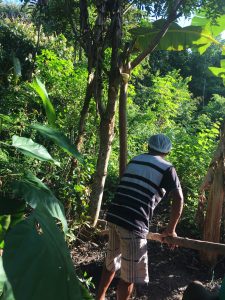 This picture is of a local community member in the Amazon rainforest cutting down a tree. At first it looks like he is trying to deforest the area, but he is actually cutting down Maniac fruit from the tree to harvest. Maniac is a local cuisine favorite used in almost every dish. The community makes it locally from trees naturally grown in the rainforest. I chose this photo as a representation that you can harvest food and trees in a sustainable way.
This picture is of a local community member in the Amazon rainforest cutting down a tree. At first it looks like he is trying to deforest the area, but he is actually cutting down Maniac fruit from the tree to harvest. Maniac is a local cuisine favorite used in almost every dish. The community makes it locally from trees naturally grown in the rainforest. I chose this photo as a representation that you can harvest food and trees in a sustainable way.
Unsustainable
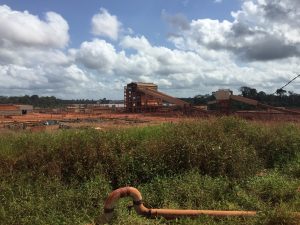 This photo is of the Alcoa mining facility in the city of Juruti in the Amazon. The mining company had deforested the Amazon rainforest to extract bauxite which is turned into aluminum. The process involves lots of water, chemicals and top soil removal. It was hard to see the damage caused to the Amazon rainforest just to make aluminum cans and other consumer products.
This photo is of the Alcoa mining facility in the city of Juruti in the Amazon. The mining company had deforested the Amazon rainforest to extract bauxite which is turned into aluminum. The process involves lots of water, chemicals and top soil removal. It was hard to see the damage caused to the Amazon rainforest just to make aluminum cans and other consumer products.
Unsustainable
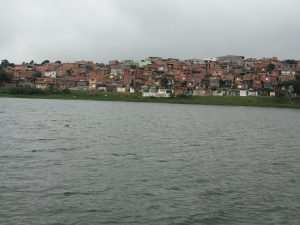 This photo is overlooking a water reservoir and a ghetto called a favela in the background. This image is striking because the favela housing, roads and walkways were unsafe, covered in trash and lacked basic amenities. These houses were built illegally on this land and built with materials and structure that was originally meant to be temporary. These homes have contaminated the water reservoir and provide poor living conditions for the residents. I chose this photo because the poverty was heartbreaking and the conditions of the environment, people and society suffer because of it.
This photo is overlooking a water reservoir and a ghetto called a favela in the background. This image is striking because the favela housing, roads and walkways were unsafe, covered in trash and lacked basic amenities. These houses were built illegally on this land and built with materials and structure that was originally meant to be temporary. These homes have contaminated the water reservoir and provide poor living conditions for the residents. I chose this photo because the poverty was heartbreaking and the conditions of the environment, people and society suffer because of it.
Sustainable
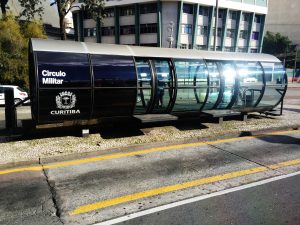 This is a photo of the rapid transit bus system in Curitiba, Brazil. Curitiba has established a well-maintained intricate network of bus stations for a safe and affordable way to move around the city. Customers pay a very low fair or swipe their monthly pass to enter inside the bus waiting area. When the bus arrives it stays for 10 seconds to create a seamless and quick alternative to driving. People of all backgrounds feel comfortable and safe riding the bus. I chose this photo because it represented something that is relatively low cost that almost any city could do to increase their public transit.
This is a photo of the rapid transit bus system in Curitiba, Brazil. Curitiba has established a well-maintained intricate network of bus stations for a safe and affordable way to move around the city. Customers pay a very low fair or swipe their monthly pass to enter inside the bus waiting area. When the bus arrives it stays for 10 seconds to create a seamless and quick alternative to driving. People of all backgrounds feel comfortable and safe riding the bus. I chose this photo because it represented something that is relatively low cost that almost any city could do to increase their public transit.
Sustainable
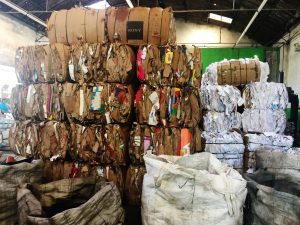 This photo is a picture of recyclable materials sorted and organized by a local business in Sao Paulo. The business employs local homeless people to walk the streets and collect recyclable materials that would be littered or sent to the landfill. The workers then process the material and sell it for a profit. This business is helping fight homelessness and empower people while reducing waste in landfills. I selected this photo because I think it is represents how sustainability can make good business sense and can provide value for the community.
This photo is a picture of recyclable materials sorted and organized by a local business in Sao Paulo. The business employs local homeless people to walk the streets and collect recyclable materials that would be littered or sent to the landfill. The workers then process the material and sell it for a profit. This business is helping fight homelessness and empower people while reducing waste in landfills. I selected this photo because I think it is represents how sustainability can make good business sense and can provide value for the community.

